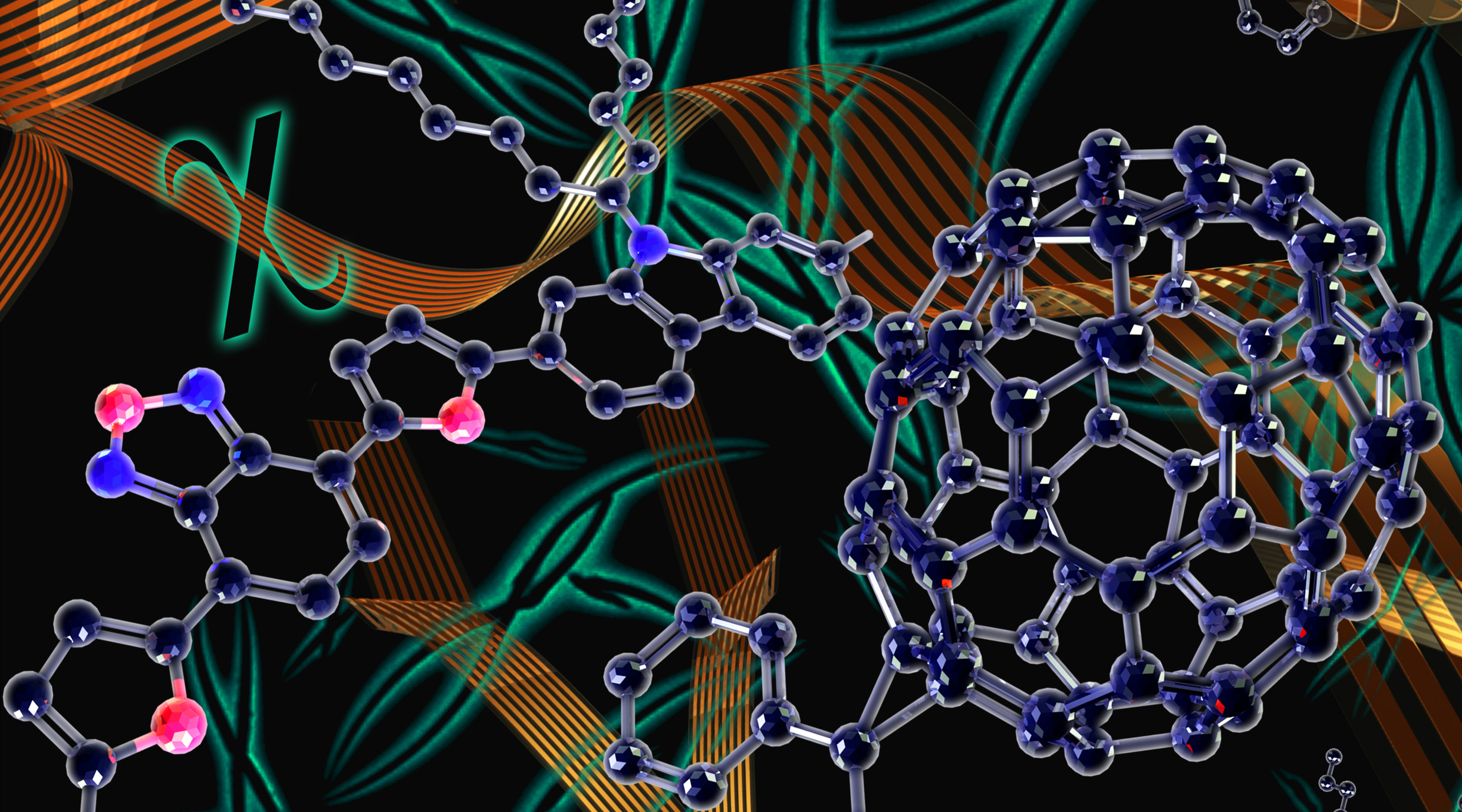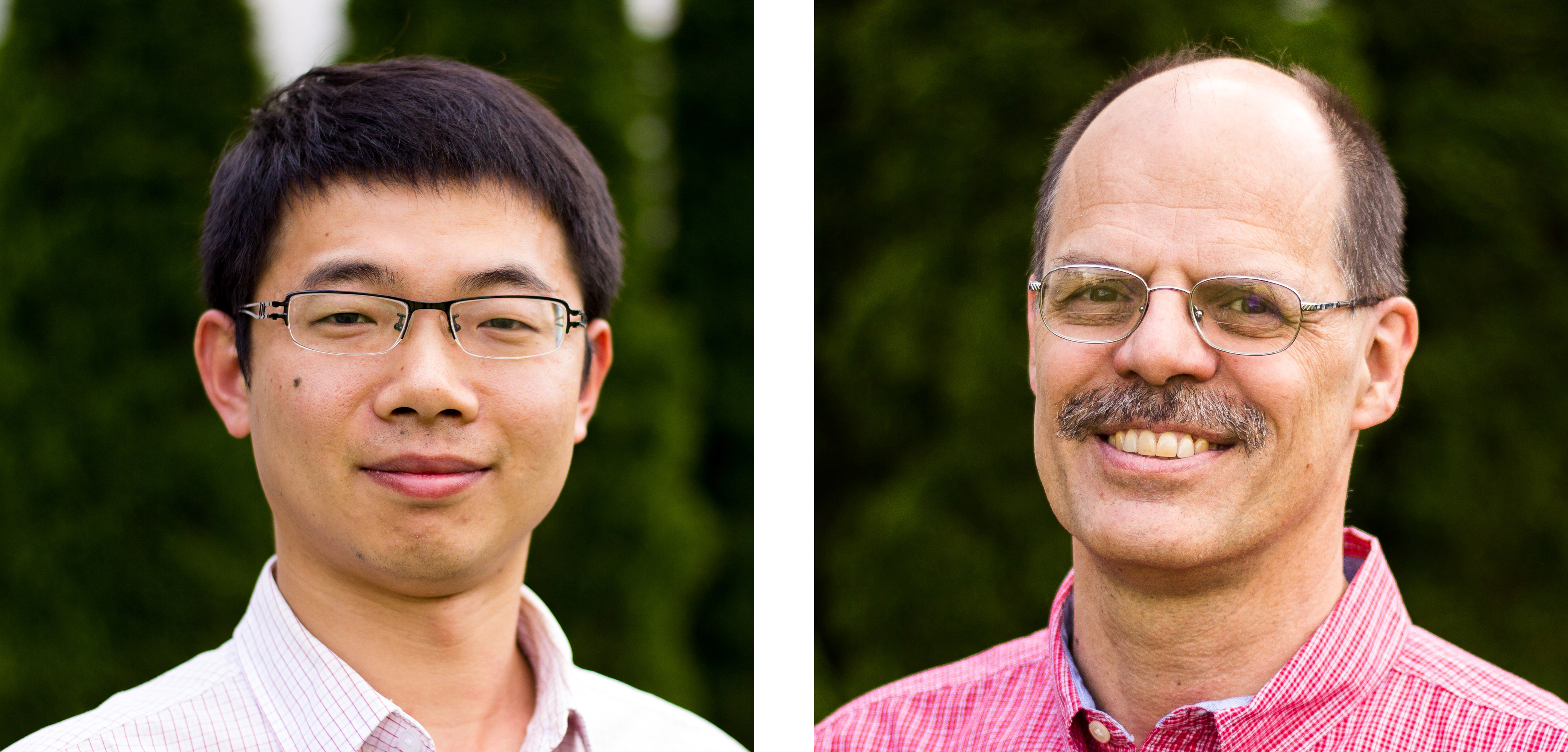SCIENTIFIC ACHIEVEMENT
Researchers have established a new quantitative model that connects molecular interactions in organic solar-cell materials to device performance.
SIGNIFICANCE AND IMPACT
The work suggests a way to quickly identify ideal material mixtures and processing methods, bypassing trial-and-error strategies and minimizing labor-intensive synthesis.

Improving efficiency—efficiently
To generate electricity from light, the photoactive layer of an organic solar cell (OSC) must allow the photoexcitation and separation of charges, something that can happen in blends of electron-donating and electron-accepting organic materials. Not surprisingly, such blends have been created in steady succession with the goal of improving device efficiency.
However, there are over a thousand combinations of electron donors and acceptors available for use in OSCs and countless processing variations. The reliance on trial and error to identify the best materials and methods is a serious limitation. A way to predict device efficiency based on easily measurable or derivable parameters would go a long way toward streamlining the process.
Flory–Huggins interaction parameter
In this work, researchers studied a model OSC system consisting of a polymer (PCDTBT) and a fullerene (PC71BM), the electron donor and acceptor, respectively. When added together, the materials may be phase-separated at a certain temperature and thus form two phases: a nearly pure fullerene-rich phase and a polymer-rich mixed phase. Because some mixing has to occur in order to separate charges, it’s the polymer-rich mixed phase that largely controls device efficiency.
Using secondary-ion mass spectrometry (SIMS) at North Carolina State University, the researchers measured the polymer volume fraction in the mixed phase as a function of temperature. Based on this data, they determined the temperature-dependent Flory–Huggins interaction parameter χ for the system. This parameter measures the energy savings from mixing (or demixing) due to forces of attraction (or repulsion) between the molecules.
One-stop x-ray shop
At the ALS, three x-ray techniques were used for this work: resonant soft x-ray scattering (RSoXS) at Beamline 11.0.1.2, scanning transmission x-ray microscopy (STXM) at Beamline 5.3.2.2, and grazing-incidence wide-angle x-ray scattering (GIWAXS) at Beamline 7.3.3. The availability of both hard and soft x-ray probes at the ALS is invaluable in a project such as this, saving researchers time, energy, and money.
RSoXS is a unique tool for the determination of polymer structure with improved chemical sensitivity. The technique was used to measure the integrated scattering intensity (ISI), a quantity related to domain purity. STXM provided quantitative information about the weight fraction of fullerene in the polymer matrix, and GIWAXS was used to characterize the molecular ordering in a variety of donor and acceptor materials, extending the work beyond the model system.

“Constant-kink-saturation” relation
The results establish a quantitative “constant-kink-saturation” relation between χ and ISI (a measure of domain purity) and between χ and a measure of device performance known as the fill factor. This relation holds across numerous high- and low-performing material systems, including fullerene and nonfullerene acceptors. Overall, the data reveal that a high fill factor (and thus better device performance) is obtained only when χ is large enough to lead to strong phase separation, with high purity of the mixed domains.
This work outlines a basis for using various experimental tests and future simulation methods to significantly reduce or eliminate trial-and-error approaches to material synthesis and device fabrication, maximizing efficiency for a given material system before laborious device optimization and complex syntheses are attempted.

Contacts: Long Ye and Harald Ade
Researchers: L. Ye, M. Ghasemi, J.H. Kim, J.H. Carpenter, T. McAfee, and H. Ade (North Carolina State University); H. Hu, K. Jiang, Z. Li, J. Zhao, J.L.Y. Lai, T. Ma, and H. Yan (The Hong Kong University of Science and Technology); T. Wang, X. Chen, and J.-L. Bredas (King Abdullah University of Science and Technology and Georgia Institute of Technology); B.A. Collins (North Carolina State University and Washington State University); H. Li (King Abdullah University of Science and Technology and Georgia Institute of Technology).
Funding: U.S. Department of Energy, Office of Science, Basic Energy Sciences Program (DOE BES); Office of Naval Research; University of North Carolina General Administration Research Opportunity Initiative; State of North Carolina; National Science Foundation; National Basic Research Program of China; HK JEBN Limited (Hong Kong); Hong Kong Research Grants Council; National Natural Science Foundation of China; and King Abdullah University of Science and Technology. Operation of the ALS is supported by DOE BES.
Publication: L. Ye, H. Hu, M. Ghasemi, T. Wang, B.A. Collins, J.H. Kim, K. Jiang, J.H. Carpenter, H.Li, Z. Li, T. McAfee, J. Zhao, X. Chen, J.L.Y. Lai, T. Ma, J.-L. Bredas, H. Yan, and H. Ade, “Quantitative relations between interaction parameter, miscibility and function in organic solar cells,” Nat. Mater. 17, 253 (2018), doi:10.1038/s41563-017-0005-1.
Adapted from the NCSU press release, “New Approach Could Quickly Identify Best Organic Solar Cell Mixtures.”
ALS SCIENCE HIGHLIGHT #375